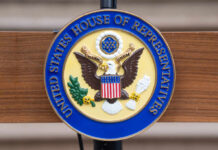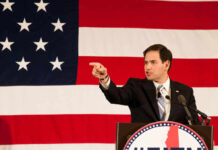
No matter how many times the Biden administration downplays the impact of skyrocketing consumer prices, Americans from all walks of life continue to suffer from the impact of prolonged inflation and rising interest rates.
The latter has been implemented by the Federal Reserve in a continuing bid to bring down costs — and for a while, it appeared to be working, albeit not as quickly as anyone would have hoped.
In recent weeks, however, a pair of economic reports showed that inflation was back up in January at a fiercer clip than anticipated.
Although the annual consumer price index was down slightly, it unexpectedly ticked up over the previous three-month and six-month periods. On the supply side, the producer price index increased by 0.7% in January — about twice what analysts forecasted — after dropping by about 0.2% the previous month.
For his part, financial analyst Peter Schiff said such a “trough in so-called disinflation” should have been expected.
“I was pointing out that it was not going to be nearly as easy to get that inflation genie back in the bottle as the markets expected,” he advised. “The CPI and PPI data should have thrown cold water on that narrative.”
Schiff went on to explain that the central bank’s focus on 2% annual inflation might be unfeasible, citing historical context to make his point.
“If you look back in time to the 1970s — that’s when inflation really got out of hand — but going back to the year 1970, there have only been 11 years since then when inflation has been 2% or lower.”
Most of those years, he pointed out, came in the topsy-turvy aftermath of the 2008 financial collapse.
What will the #Fed do if higher interest rates causes another financial crisis, but #inflation remains well above the 2% target? Will the Fed chicken out and pivot, sending the inflation rate to new highs, or will it hang tough and let the crisis play out naturally.
— Peter Schiff (@PeterSchiff) February 25, 2023
“If you go back to a normal period of time, and you could argue today’s time period is more normal in that respect based on where interest rates are, why should it be any easier for the Fed to get 2% inflation now than it was before the 2008 financial crisis?” Schiff asked. “In fact, it should be harder for the Fed to achieve that goal because we have so much more debt now than we had back then.”
He concluded by highlighting the exacerbating impact that rampant money-printing has on inflation.
“The Fed has created so much money — like half the money in circulation came into circulation just in the last couple of years,” he said. “So, that really makes the Fed’s job of bringing inflation down to 2% basically impossible.”



























